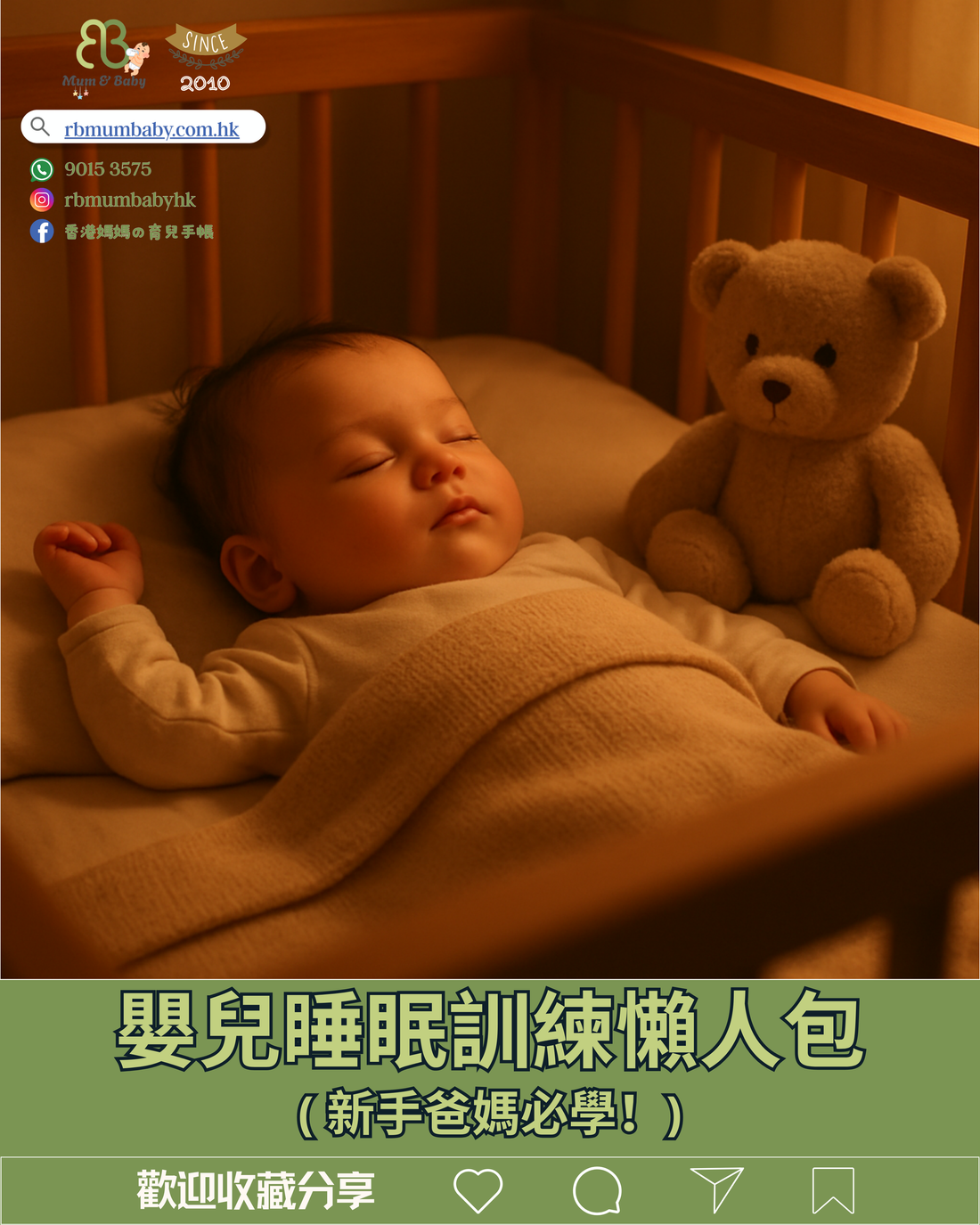
Baby sleep training tips: A must-have for new parents! 3 methods approved by Hong Kong experts: Say goodbye to nighttime feedings!
"When will my baby finally sleep through the night?" This is probably the question every new parent asks in the middle of the night. Endless nighttime feedings and prolonged periods of holding babies to sleep not only prevent babies from developing good sleep habits but also severely drain parents' energy.
Infant sleep training isn't the brutal, brutal exercise it's often portrayed as. Instead, it helps babies learn the art of falling asleep independently through the establishment of routines and rituals. This article introduces three gentle methods, endorsed by Hong Kong pediatricians , to help you and your baby say goodbye to nighttime feedings and regain sweet dreams.
Preparation before sleep training (golden rule)
Before starting any training, make sure:
- If your baby is 4-6 months old: The weight is sufficient and the physiological conditions are met to sleep through the night.
- Eliminate physical discomfort: Make sure your baby isn't sick, teething, or has a wet diaper.
- Establish a regular sleep ritual: This is half the battle! For example: bath -> change into pajamas -> drink milk -> brush teeth/clean mouth -> tell a story/listen to music -> turn off the lights and go to bed. The whole process takes about 15-20 minutes. (Internal Link -> Shop Gentle Baby Bath and Care Products)
Method 1: Pick Up, Put Down
- Suitable for: Younger babies (4-6 months) or parents who cannot tolerate their baby crying.
-
practice:
- Once you've completed your sleep ritual, place your sleepy but awake baby in his or her crib.
- If your baby starts crying, you can pick him up and comfort him, then put him back to bed once he calms down.
- Repeat this process until your baby falls asleep in the crib on his own.
- advantage: Very gentle, giving the baby enough sense of security.
- shortcoming: It takes a very long time and may need to be repeated dozens of times, which tests the parents' patience to the extreme.
Method 2: Ferber Method / Graduated Extinction
- Suitable for: Babies over 6 months old who can understand cause and effect.
-
practice:
- Put your baby in the crib and leave the room.
- If your baby cries, wait for a fixed time (for example, 3 minutes) before entering the room to comfort him (using sound or patting, do not pick him up), and leave after comforting him for about 1-2 minutes.
- Gradually increase the time between your visits to the room (e.g. 3 minutes -> 5 minutes -> 10 minutes).
- advantage: The success rate is high, and noticeable results are usually seen within a week.
- shortcoming: Babies will cry to a certain extent, which is a challenge for parents.
Method 3: The Chair Method
- Suitable for: Older babies with more severe separation anxiety.
-
practice:
- The first night, place the chair next to the crib and stay with your baby until he falls asleep.
- Then, every one or two days, move the chair a little closer to the door.
- The ultimate goal is to move the chair out of the room so your baby gets used to falling asleep without you.
- advantage: The process is very gradual and the psychological impact on the baby is relatively small.
- shortcoming: This process takes a long time and may take several weeks.
Conclusion: No single method is perfect. The most important thing is to choose a plan that you and your family can stick with. The key to sleep training your baby is consistency . With a united and consistent approach, you and your baby will surely enjoy a restful night.
